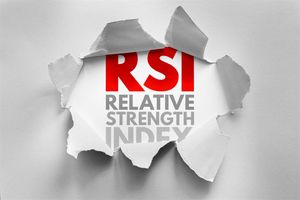
Snowflake (NYSE: SNOW), a leader in cloud-based data warehousing, has reached a significant milestone on October 8, 2025, with its stock hitting a new 52-week high of $250.15. This achievement reflects a remarkable 106.4% increase over the past year, signaling strong investor confidence and robust performance in a competitive market. The surge positions Snowflake at the forefront of the evolving AI Data Cloud landscape, yet it also brings into focus the dynamics of market valuation and insider activity. This new high underscores the company's growing influence and the increasing demand for scalable, cloud-agnostic data solutions in an era dominated by data-driven decision-making and artificial intelligence.
Detailed Coverage of the Event
The recent ascent of Snowflake's stock to a new 52-week high is a culmination of several positive developments and strategic maneuvers within the company. On October 8, 2025, the stock touched $250.15, pushing its market capitalization to an impressive $84.45 billion. This peak follows a sustained period of growth, with the stock demonstrating a 3.97% rise over the previous week and a 4.86% increase over the last month. Over the past year, Snowflake Inc. has seen its stock price surge by an astounding 118.01%, far outpacing many market benchmarks.
This upward trajectory has been fueled by a series of strong financial reports. Snowflake reported robust Q2 earnings, with product revenue climbing to $1.09 billion, a 32% year-over-year increase. Adjusted earnings per share reached $0.35, comfortably exceeding analyst expectations of $0.27. The company's total revenue for Q4 2025 hit $986.8 million, with product revenue growing by 28% year-over-year. Most recently, revenue amounted to $1.14 billion, surpassing the estimated $1.09 billion. In response to this stellar performance, Snowflake has raised its 2025 product revenue forecast to $4.4 billion, signaling continued optimism from management.
Key players in the financial sector have reacted positively to Snowflake's performance. UBS recently increased its price target on Snowflake to $310 from $285, reiterating a "Buy" rating. Similarly, Mizuho and Jefferies have maintained "Outperform" and "Buy" ratings, respectively, with price targets of $260 and $270. This widespread analyst endorsement contributes significantly to investor confidence. However, it's worth noting a counter-narrative: significant insider selling has occurred, with over $291 million in company stock sold by insiders in the past three months. Specifically, Director Michael L. Speiser sold over $11 million worth of shares in early October 2025, leading to a temporary dip in the stock price, which quickly recovered, highlighting the market's underlying bullish sentiment for the company.
Companies that Might Win or Lose
Snowflake's remarkable performance and its new 52-week high send ripples across the cloud computing and data analytics landscape, creating both winners and losers. Winning entities primarily include Snowflake itself, its investors, and its extensive ecosystem of partners. Snowflake's continued growth validates its business model and strategic direction, particularly its focus on an "AI Data Cloud." Investors holding SNOW stock have seen substantial returns, and the positive momentum could attract further institutional and retail investment. Its partners, including various data integration, analytics, and AI solution providers that build on or integrate with the Snowflake Data Cloud, also benefit from its expanding customer base and platform stickiness. The success of Snowflake reinforces the broader trend of cloud adoption, benefiting hyperscalers like Amazon (NASDAQ: AMZN), Microsoft (NASDAQ: MSFT), and Alphabet (NASDAQ: GOOGL), as Snowflake runs its operations across their cloud infrastructures, driving consumption of their underlying services.
Conversely, Snowflake's robust growth intensifies pressure on its competitors, who could be seen as losing market share or facing increased challenges in differentiating their offerings. Direct competitors in the cloud data warehousing and analytics space include Google BigQuery, Amazon Redshift, and Microsoft Azure Synapse Analytics. While these platforms are backed by tech giants with vast resources, Snowflake's cloud-agnostic approach and specialized focus continue to attract enterprises. Databricks, with its lakehouse platform, is another formidable competitor, particularly in the data science and machine learning segments. Snowflake's success in integrating Generative AI capabilities through Snowflake Cortex further heightens the competitive stakes, potentially siphoning off customers who might otherwise consider Databricks for their AI workloads.
Smaller, specialized data management and analytics firms might also find it increasingly difficult to compete against Snowflake's comprehensive platform and strong market presence. Companies like Firebolt, ClickHouse, and traditional data warehouse providers such as Teradata (NYSE: TDC) and Oracle (NYSE: ORCL), with its Autonomous Data Warehouse, face the challenge of adapting to the rapid pace of innovation and the demand for cloud-native, scalable solutions that Snowflake exemplifies. While these companies may have niche strengths, Snowflake's broad appeal and expanding feature set, including data sharing and AI capabilities, could lead to customer attrition or slower growth for rivals. The perception of Snowflake's core offerings being expensive, as noted by some customers, might offer a slim opening for cost-effective alternatives, but this hasn't significantly impacted its demand or growth trajectory so far.
Wider Significance
Snowflake's ascent to a new 52-week high is more than just a company-specific achievement; it's a significant indicator of broader industry trends shaping the future of enterprise data management and artificial intelligence. This event underscores the accelerating shift towards cloud-native data platforms and the increasing importance of flexible, scalable, and secure data warehousing solutions. Enterprises are no longer content with siloed data; they demand unified platforms that can handle diverse data types and enable advanced analytics and machine learning at scale. Snowflake's cloud-agnostic architecture, which allows it to run on AWS, Azure, and Google Cloud, perfectly aligns with the multi-cloud strategies adopted by many large organizations, cementing its position as a critical infrastructure provider.
The strategic positioning of Snowflake as an "AI Data Cloud" platform, highlighted by the introduction of Snowflake Cortex, signifies a pivotal moment in the industry. It reflects the growing convergence of data warehousing, data lakes, and AI/ML capabilities into a single, cohesive environment. This trend is driven by the imperative for businesses to leverage their vast datasets for AI model development and deployment. Snowflake's ability to bring Generative AI directly to its platform simplifies the process for customers, reducing the complexity and cost associated with integrating disparate AI tools. This move creates a ripple effect, compelling competitors to similarly enhance their AI offerings and integrate them more deeply into their core data platforms to remain competitive.
Regulatory and policy implications, while not immediately apparent from a stock high, are subtly influenced by the dominance of platforms like Snowflake. As more critical enterprise data migrates to the cloud and is processed by powerful analytics engines, concerns around data governance, privacy, and security become paramount. Snowflake's robust security features and compliance certifications are key selling points, but the industry's reliance on a few major players could attract increased scrutiny from regulators regarding data monopolies, interoperability, and data portability. Historically, the tech industry has seen similar consolidation around leading platforms, often leading to antitrust investigations or calls for greater data control by users. Snowflake's continued growth, alongside competitors like Databricks, suggests a market consolidating around a few "winners," a pattern seen in other software segments.
What Comes Next
Looking ahead, Snowflake's trajectory after reaching a new 52-week high presents a fascinating landscape of short-term and long-term possibilities. In the short term, the positive momentum from the stock's performance and strong financial reports is likely to continue attracting investor interest. However, the market will closely watch for any signs of profit-taking, especially given the notable insider selling observed recently. The immediate focus for Snowflake will be on sustaining its impressive revenue growth and demonstrating continued adoption of its newer offerings, particularly the "AI Data Cloud" features and Snowflake Cortex. Any further analyst upgrades or positive earnings surprises could provide additional catalysts for the stock.
In the long term, Snowflake faces both immense opportunities and significant challenges. The overarching opportunity lies in the burgeoning demand for data-driven insights and AI capabilities across all industries. Snowflake's strategic pivot to an "AI Data Cloud" positions it well to capture a substantial share of this market. Potential strategic pivots for the company might include further expansion into vertical-specific solutions, deeper integrations with emerging AI frameworks, or even strategic acquisitions to enhance its platform capabilities or expand its market reach. The company will need to continuously innovate to stay ahead of its well-funded competitors, ensuring its platform remains the preferred choice for data storage, processing, and AI development.
Market opportunities that may emerge include the untapped potential in smaller and medium-sized enterprises (SMEs) that are increasingly looking to leverage cloud data solutions but might find current offerings complex or costly. Snowflake could explore tiered pricing models or simplified versions of its platform to cater to this segment. Challenges include the intense competition from hyperscalers like Amazon (AWS), Microsoft (Azure), and Google (GCP), who are constantly enhancing their own data warehousing and analytics services. Furthermore, managing the perception of its platform's cost-effectiveness will be crucial, as some customers perceive Snowflake's core offerings as expensive. Potential scenarios include Snowflake solidifying its position as the undisputed leader in cloud data warehousing and AI data platforms, or a more fragmented market where niche players and hyperscalers gain significant ground through aggressive pricing or specialized offerings.
Comprehensive Wrap-up
Snowflake's (NYSE: SNOW) stock reaching a new 52-week high on October 8, 2025, is a resounding affirmation of its robust performance and strategic vision in the rapidly evolving cloud-based data warehousing and AI landscape. The key takeaway from this event is the powerful combination of strong financial results, positive analyst sentiment, and a clear strategic direction towards becoming the central "AI Data Cloud." This milestone reflects not just investor confidence in Snowflake's current capabilities but also its potential for sustained growth as businesses increasingly rely on data for competitive advantage and AI innovation. The company's cloud-agnostic architecture and comprehensive platform, now enhanced with Generative AI through Snowflake Cortex, position it as a critical player in the modern data ecosystem.
Moving forward, the market will be closely assessing Snowflake's ability to maintain its growth trajectory amidst intense competition and evolving technological demands. While the current market assessment is overwhelmingly positive, the presence of significant insider selling serves as a reminder for investors to remain vigilant and consider all aspects of a company's performance. The lasting impact of this event is likely to be a further acceleration of cloud adoption and the integration of AI capabilities directly into data platforms, setting a new benchmark for what enterprises expect from their data solutions.
Investors should watch for several key indicators in the coming months: continued product revenue growth, the adoption rate of new AI features like Snowflake Cortex, customer acquisition and retention rates, and any strategic partnerships or acquisitions. Furthermore, monitoring the competitive landscape and how rivals respond to Snowflake's advancements will be crucial. While the current outlook is bright, the dynamic nature of the tech industry means continuous innovation and strategic execution will be paramount for Snowflake to sustain its leadership position and deliver long-term value to its shareholders.
This content is intended for informational purposes only and is not financial advice





